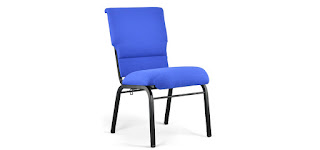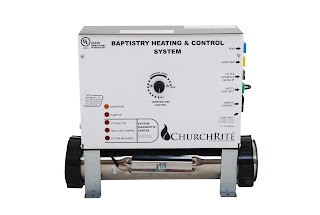Once you have decided on using chairs instead of pews for
your congregation seating, it’s time to think about how to arrange your chairs.
There are several different options for the layout, depending on the size and
shape of your sanctuary.
The multiple-aisle arrangement is very popular in large,
rectangular sanctuaries. This arrangement sets rows of chairs in large “blocks”
with aisles separating the blocks. Rows should be set up with 14-16 chairs per
row. Of course, the fewer chairs in a row, the more comfortable the
congregation will be because there will be less distance to get to an aisle.
If there is only access to an aisle on one end of the row,
the row should contain fewer seats – ideally half of what a dual-access row
would have. For instance, if one side of the row is blocked by a wall, that person
should be able to get to an aisle without having to bypass too many chairs. Fire
codes and any other governing codes should be followed first.
 A continental arrangement is a theater-style seating
arrangement with longer rows, but more space between each row to allow easier
movement between aisles and seats. It’s not uncommon for rows to form an arc
with this seating arrangement. In many instances, this is a great way to
utilize space for maximum seating, but again, governing codes should always be
adhered to. This type of arrangement is found in many auditoriums and theaters
and works well with theater seats, in which the seat of the chair automatically
folds into an upright position when not being used, which allows even more room
in the walkway when a seat is empty.
A continental arrangement is a theater-style seating
arrangement with longer rows, but more space between each row to allow easier
movement between aisles and seats. It’s not uncommon for rows to form an arc
with this seating arrangement. In many instances, this is a great way to
utilize space for maximum seating, but again, governing codes should always be
adhered to. This type of arrangement is found in many auditoriums and theaters
and works well with theater seats, in which the seat of the chair automatically
folds into an upright position when not being used, which allows even more room
in the walkway when a seat is empty.
In church classrooms, the arrangement should be based on the
style of teaching and the size and shape of the room. In a formal teaching
environment, rectangular tables are often used with rows of chairs along the
side that faces the teacher. Larger classrooms might have more of a lecture
hall look, with rows of chairs and aisles. More informal classrooms might even
incorporate round tables to encourage talk among students.
 Fellowship halls are areas where meals and other gatherings
take place. Because of this, banquet tables are a great choice for this area.
Line both sides with banquet-style chairs, such as the Kingdom
Fellowship halls are areas where meals and other gatherings
take place. Because of this, banquet tables are a great choice for this area.
Line both sides with banquet-style chairs, such as the Kingdom
Multi from Church
Furniture Store. For more intimate gatherings, try using round tables and
slightly wider, more thickly cushioned chairs, such as chairs from the Worship
Stacker Series from Church Furniture Store.
When arranging your chairs in the church, whichever room you
are designing, always remember the functionality of the layout and the comfort
of your guests.
























